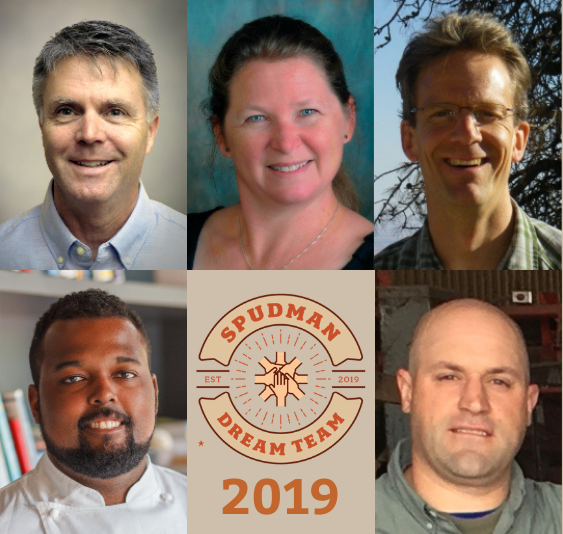
Spudman announces honorees of first potato industry Dream Team
There are many roles within the potato industry. Grower. Packer. Truck driver. Researcher. Crop protection specialist. Salesperson.
Just like with a football or baseball team, each person doing his or her job well makes the unit collectively successful.
The goal of our new awards program — The Dream Team — is to recognize the individuals doing outstanding work in the potato industry, no matter what their role in it happens to be.
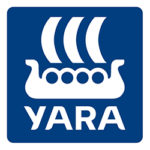 After a nomination process and judging process, we have picked five people to make up this inaugural all-star team. Without any further ado, here are the members of our first Dream Team.
After a nomination process and judging process, we have picked five people to make up this inaugural all-star team. Without any further ado, here are the members of our first Dream Team.
Spudman thanks Yara for its continued support of our awards programs.
Andy Jensen, Northwest Potato Research Consortium
When the input of 50 people must be considered from a research project’s start to its finish, a lot can go wrong. Since its inception in 2012, the Northwest Potato Research Consortium (NPRC) has counted on Andy Jensen to make sure things go right.
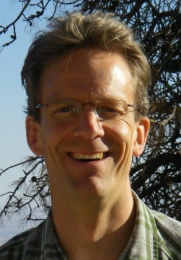
The consortium is a collaboration of the state commissions of Idaho, Oregon and Washington. It was created to do potato research of its own, but more so to work with outside scientists, primarily at universities, on projects that will benefit the potato industries in those states and beyond.
It’s Jensen’s responsibility to oversee and administer $1.5 million in research funding of the commissions. That includes fielding proposals as well as seeking out people to handle research requests of the commissions. In addition to the funding provided by the commissions, Jensen also oversees grant writing for federal funding for some projects. In addition, Jensen is responsible to helping to plan for the annual Washington-Oregon Potato Conference, particularly, by choosing many of the education sessions and speakers.
Jensen reports to a board of nine commissions, three from each state. He also leads discussions with staff, volunteer proposal reviewers and the scientists who will conduct the research. In all, he’ll work with 50-plus people on a project, and the consortium funds upward of 30 projects a year.
“Andy’s job is like herding cats, and he does it with a smile,” said Ellie Charvet, a Washington State Potato Commissioner.
The consortium tends to divvy up support for projects 50-50 between what Jensen described as “applied research” and “basic research.” Applied is a project that is designed to produce findings that can immediately be used by growers, whereas basic or fundamental research could include a fresh look at an old problem or diving into an emerging issue.
“I’m a big advocate for difficult diseases that don’t have a good solution, such as powdery scab, that need new scientific approaches,” said Jensen, who cited the ongoing work of Kiwamu Tanaka at Washington State University on the subject. “Powdery scab and mop-top (virus), which go together, is definitely one some people view as being an up-and-coming serious issue. There is no pesticide that controls powdery scab and no management process that’s particularly effective.”
Jensen holds a Ph.D. from Oregon State University, where he also earned bachelor’s and master’s degrees. A self-proclaimed “city kid from Portland,” Jensen had no ties to farming as a child, but was fascinated with insects. He eventually majored in entomology, which led to agriculture.
He finds fulfillment in working with scientists and seeing growers benefit from his efforts, whether it’s implementing research or learning something new at the conference.
“I find my job engaging and interesting,” he said. “As a scientist, I like talking with scientists, and I get to do that quite a bit.”
Away from work, he likes riding racing-style bikes, cooking and maintains a website with the latest findings on insects (AphidTrek.org).
RJ Harvey, Potatoes USA
If the Food Network ever devotes a show solely to potatoes, RJ Harvey would be the perfect host.
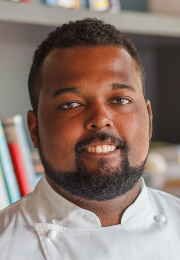
Harvey’s job as director of culinary for Potatoes USA has him coming with innovative ways to use potatoes and potato products in the kitchen, whether in a restaurant or in the home. His creativity and cooking chops are taking spuds in exciting new directions.
Harvey, a Denver native, studied at Johnson & Wales University, where he earned a degree in culinary nutrition. He’s been with Potatoes USA since 2017 (and in his current position since July 2019), but has extensive experience working in fine dining at hotels, restaurants, resorts and in the healthcare and education sectors.
Harvey’s job is two-pronged. There is creativity in the kitchen part, which sees him utilize fresh, frozen and dehydrated potatoes in nontraditional ways. A few of his favorites include:
- Using a vegetable spiralizer to create potato noodles. These can be used to make everything from spaghetti and meatballs to Vietnamese pho.
- The Spudwich — a sandwich where frozen hash brown patties are used in place of bread. The filling options are endless.
- How about using dehy potato flakes as breading instead of breadcrumbs? Yes, Harvey has done that too. For something else unique and a nutty flavor, try using half potato flakes and half breadcrumbs, he suggests.
The second part of the job is getting these ideas, which are meant to inspire more innovation rather than just be used as recipes, to the people that can use them. Harvey and the marketing team at Potatoes USA have created print and digital literature than can be mailed to foodservice operators, distributed at trade shows or downloaded from the organization’s website.
Potatoes USA also in the process of creating “gold standards” for common uses of potatoes, like best practices for baked or mashed. These can be distributed to retailers and handed out during in-store promotions or displayed near potatoes.
Harvey is at his best, however, when he gets a chance to be face-to-face with foodservice operators or culinary students.
“He is a gifted communicator and a passionate advocate for potatoes,” said Blair Richardson, CEO, Potatoes USA. “He has trained young chefs across the globe in the use of potatoes in new and creative ways — from China to Thailand, Japan to Panama, the U.S. and beyond. RJ has inspired chefs to create new uses for potatoes such as potato ceviche, potato charcuterie, potato shawarma, and potato risotto, to name only a few.”
RELATED: Harvey taking potatoes in exciting new directions
When communicating with foodservice operators and culinary students, Harvey said the attitude toward potatoes is overwhelmingly positive. Even when encountering chefs who are skeptical due to the anti-carb narrative, Harvey said there is still interest.
“They are curious for information, and that’s what we’re here for. We showcase there are all these studies that show there is nothing negative about potatoes from a nutrition perspective, that they’re a nutrient-dense vegetable,” he said. “We also showcase the versatility and cost-effectiveness of potatoes. The reality is you should menu more potatoes if you want to make good business sense and get more vegetables on your menu.”
Nora Olsen, University of Idaho Extension
When it comes to the subject of potato storage research and best practices, Nora Olsen, Ph.D., is one of the most recognized authorities in the world. The University of Idaho Extension specialist and associate professor didn’t achieve that status solely through lab studies, however.
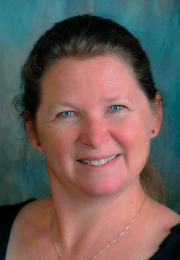
Olsen has always taken an extroverted approach to her work. She is constantly writing research papers and articles, speaking at conferences, hosting webinars or being interviewed by newspapers or TV stations covering agriculture. She does so not just to share her knowledge, but to put herself in position to interact with people who use her research in practice.
“We have to take the time to make sure we’re delivering information in multiple formats. So much of that delivery is when you get feedback,” Olsen said. “You might give a presentation and the someone asks a question. It’s like, ‘Oh, well I hadn’t thought of that.’
“That’s what we need in our science-driven research is that constant feedback. That always helps drive the next stage.”
Olsen’s willingness to embrace what she doesn’t know as just easily as what she does can be traced back to her choice of college. She did not grow up on a farm, but does hail from farming country in Eastern Washington. After graduating high school, Olsen chose Connecticut College, a small, private liberal arts school that’s a stone’s throw from Long Island Sound.
Spending four years on the East Coast was quite an eye-opening, Olsen said. “It was very interesting to be that close to (New York, Boston and Washington, D.C.) and see where the money and power comes from in this country,” she said.
After earning her bachelor’s degree, Olsen was ready to return home. She entered graduate school at Washington State University, where she also completed a doctoral program.
While at WSU, Olsen’s brother started growing potatoes. She said the opportunity to help and speak with him gave her a love of potatoes, but also helped instill a real-world approach early on.
“It helped me understand the constraints that people have when it comes to money and labor,” she said. “It’s not as easy as just giving science-based recommendations, which is what we do, but you also have to understand all the logistics and reality that surround those recommendations.”
Olsen said she leans heavily on her fellow researchers, not only in the Pacific Northwest but beyond. Among them is Jeff Miller at Miller Research in Rupert, Idaho. Miller said Olsen’s findings have helped potato growers around the world, and cited her work with phosphorous acid as a key example.
“Nora was one of the lead investigators to show that phosphorous acid could be applied as a post-harvest application to potatoes to manage water-mold diseases,” Miller said. “This practice has been adopted in many places around the world.”
Olsen said she’s enjoyed focusing on storage during her career. “We spend all this time and money to ensure quality and yield, but storage is just as important,” she said.
Kyle Coleman, NovaSource
Kyle Coleman has been in crop protection for 20 years, but the past three have provided the highlight of his career.

When Coleman heard about the work University of California Davis Extension Specialist Steve Fennimore, a weed control expert, was doing with a MiniRAE photoionization detector, it sparked Coleman’s curiosity. He decided to buy one and start testing the effectiveness of the fumigant metam sodium.
Coleman, the director of commercial development at NovaSource, asked well-known carrot producer Grimmway Farms if he could conduct the initial tests in their fields. When Coleman got the readings back, he was shocked, as were the Grimmways. The metam sodium wasn’t moving at nearly the rate or efficiency as was previously assumed.
“When I gave them their results, they had surprised looks on their faces; they were not happy,” Coleman said. “It just wasn’t where they thought it was.”
The Grimmways were the only growers Coleman had approached about testing. Once the word got out, his phone starting ringing from others looking to have their soil tested. Three years and tens of thousands of readings later, the findings all point to the same thing: a variety of conditional factors need to be considered for when and how to apply metam sodium.
“The data reveals the critical importance of soil moisture, soil preparation and precision placement in product efficacy because metam sodium does not travel through the soil profile as far or as fast as had been assumed for decades,” said Andy Robinson, North Dakota State University Plant Sciences Associate Professor and Extension Agronomist. “(Coleman’s) studies show that variables in soil type, soil temperature and soil tilth can either facilitate — or impair — product efficacy.”
Coleman added that the pest being targeted also matters. “If the pest isn’t respiring because it’s too cold or maybe it’s too hot and dry, then it’s going to take a higher rate or we’re going to need a longer exposure period. Or maybe both,” Coleman said.
Of the “dozens and dozens” of cooperators Coleman has worked with, he estimates 95% have made alternations to their application methods. He said research is not to the point of having a system in place when approaching a new farm, but uses the readings as a guide to make changes. “We take everything into consideration,” he said. “It depends on tractor by tractor, farm by farm and field by field.”
Robinson credited Coleman’s intuition and hard work on what is turning into valuable findings for farmers. “He frequently traveled alone for many hours to a remote location, armed with only a shovel to dig trenches as deep as 5 feet, a piece of PVC pipe to poke holes in the ground and his MiniRAE,” Robinson said. “In many cases, in the middle of the night or just before dawn, he also brought a flashlight and heavy clothing.”
RELATED: Placement, conditions key in metam sodium performance
Coleman has been with NovaSource since 2014. He previously worked with AMWAC and Dow Agrosciences. He is a Washington native and a graduate of Utah State University.
Matt Floming, Neumiller Farms
It’s not unusual to encounter family-owned farms in the United States that go back five, six or even seven generations. Neumiller Farms, with several fields in northwestern Illinois, isn’t unlike that, although, at three generations, it’s still younger than many.
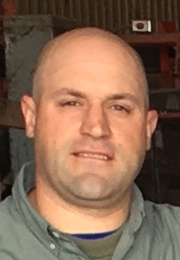
Most current leadership of multigenerational farms grew up in agriculture because that was the family business.
Matt Floming, who is the field manager of Neumillers’ Savanna, Illinois field, is something of an anomaly. He didn’t grow up in agriculture, but the camaraderie and hard work of the family farm proved appealing.
Five years ago, Floming left a “cushy corporate sales gig” to go to work at his in-laws’ family business. Floming’s wife is Katie (Neumiller) Floming, the sales manager for Neumiller Farms.
“I really like the idea of working with my wife and her family; I thought this was a great opportunity,” Matt Floming said. “I like the idea of the family farm and my kids (ages 8 and 5) having the opportunity to grow up on the farm. Maybe they’ll decide to continue in it when they’re older.”
Neumiller Farms, led by third-generation grower Tom Neumiller, grows 3,000 acres of potatoes per year — mostly for processing — along with soybeans, sweet corn, field corn and green beans. While Matt oversees the Savanna field, Ron Neumiller manages the fields in Cordova and Erie, Illinois.
The farm employees about four dozen people, some of which have been with the operation since it moved from Wisconsin to Illinois in 1974. Floming said the staff is “tight-knit” because so many have been a part of the staff year after year.
“Some worked here with their parents or even their grandparents,” Floming said. “There is a lot of wisdom here. I still consider myself in the sponge stage of learning everything I can.”
Floming finds the art of farming and producing a crop fulfilling, which culminates when seeing people eat the finished product.
“When I see someone open a bag of chips or eat some potato salad, to know that we grew it,” he said, “that is a really great feeling.”
The members of the Dream Team were recognized during the National Potato Council’s awards banquet in Las Vegas on Jan. 16. Jimmy Ridgeway of Yara North America presented them with plaques.







